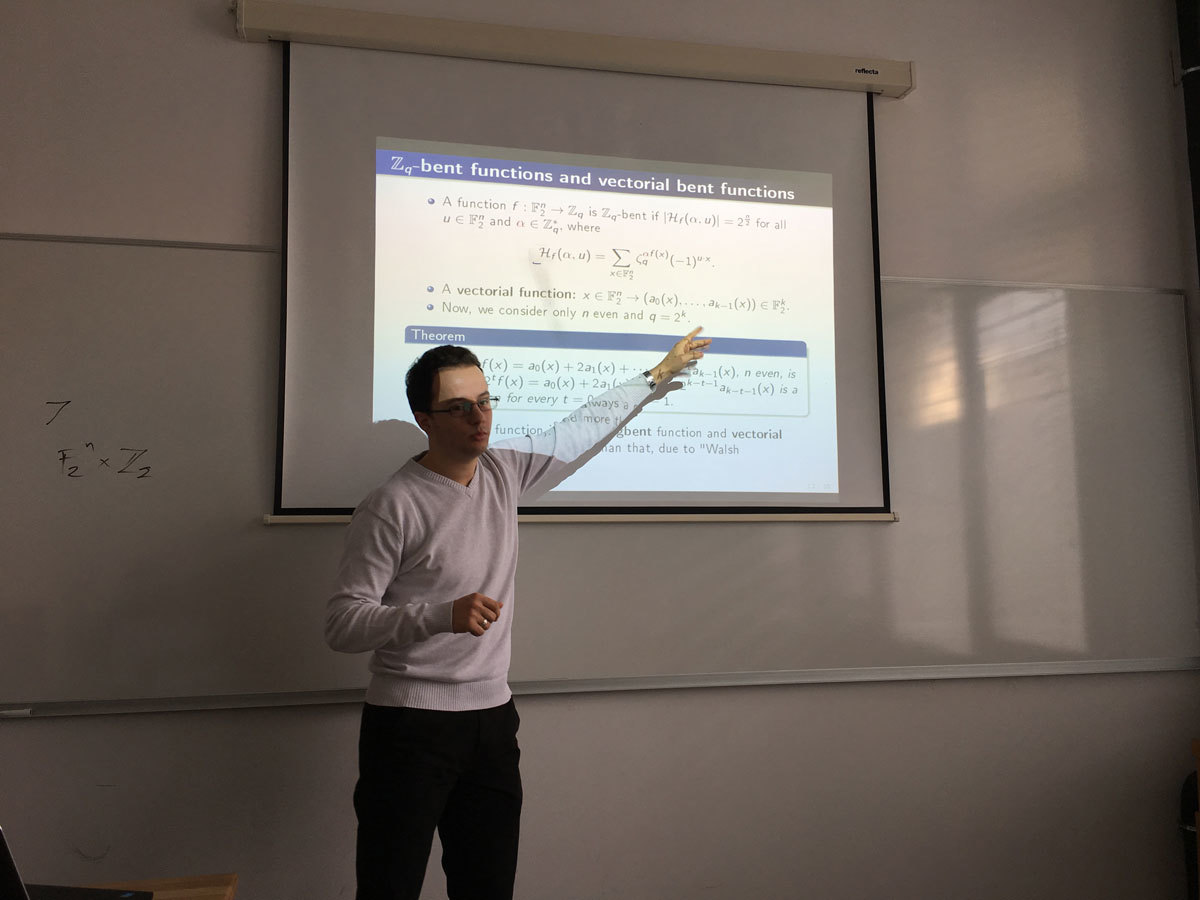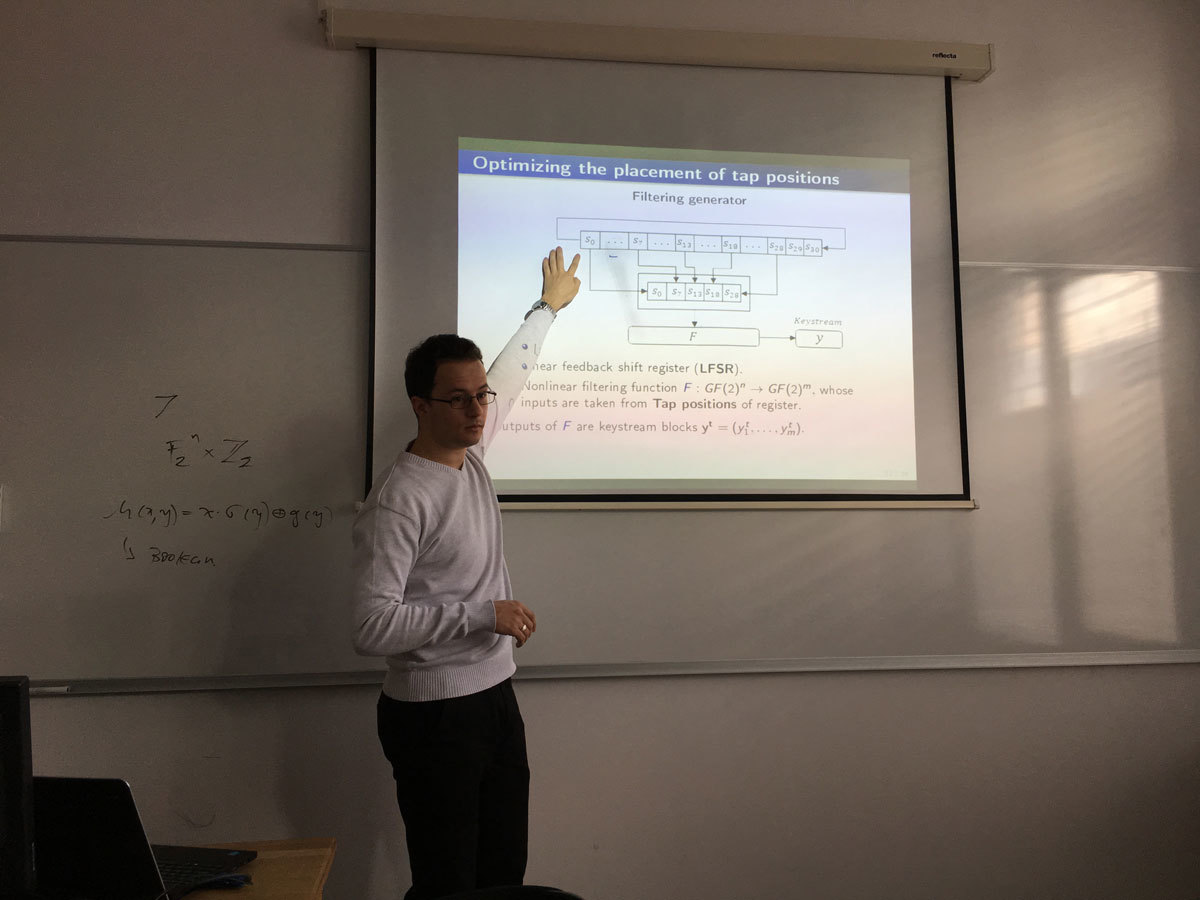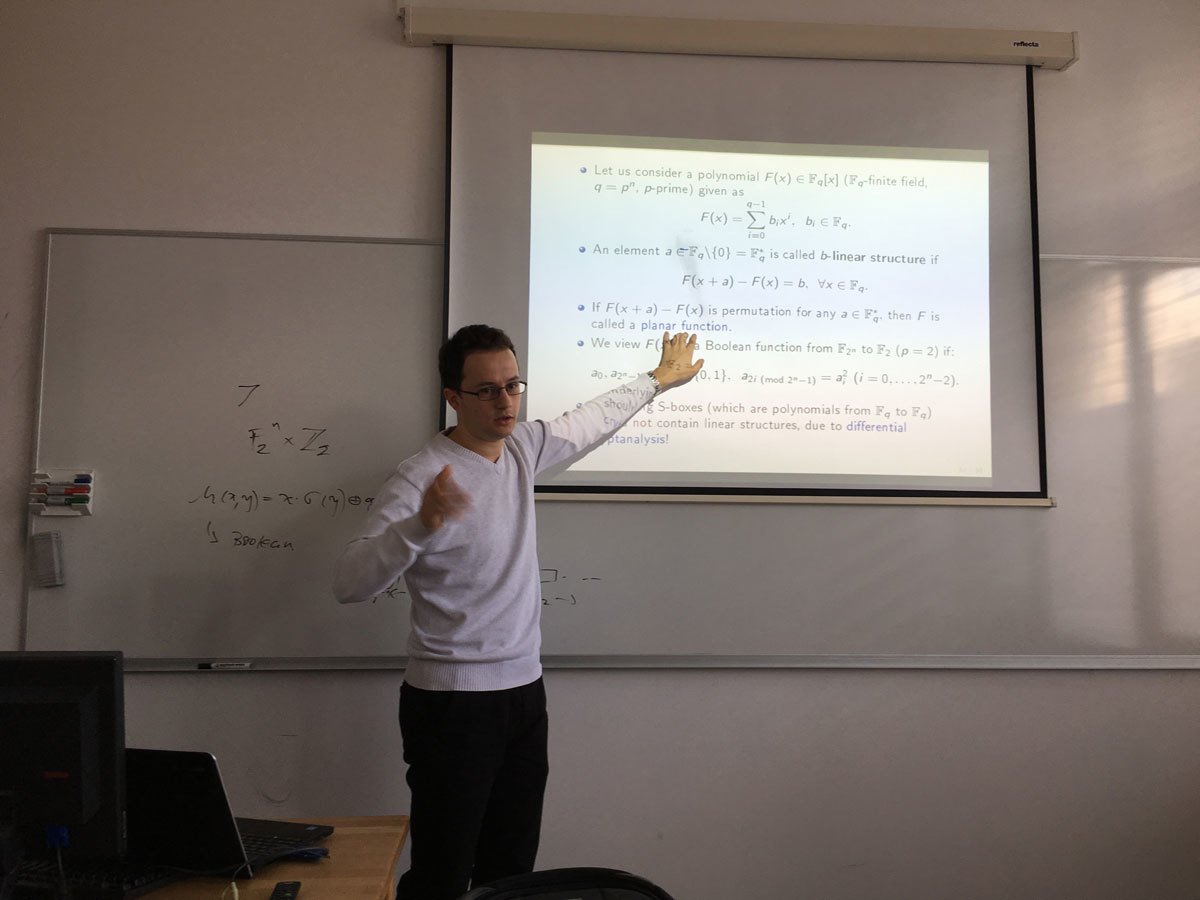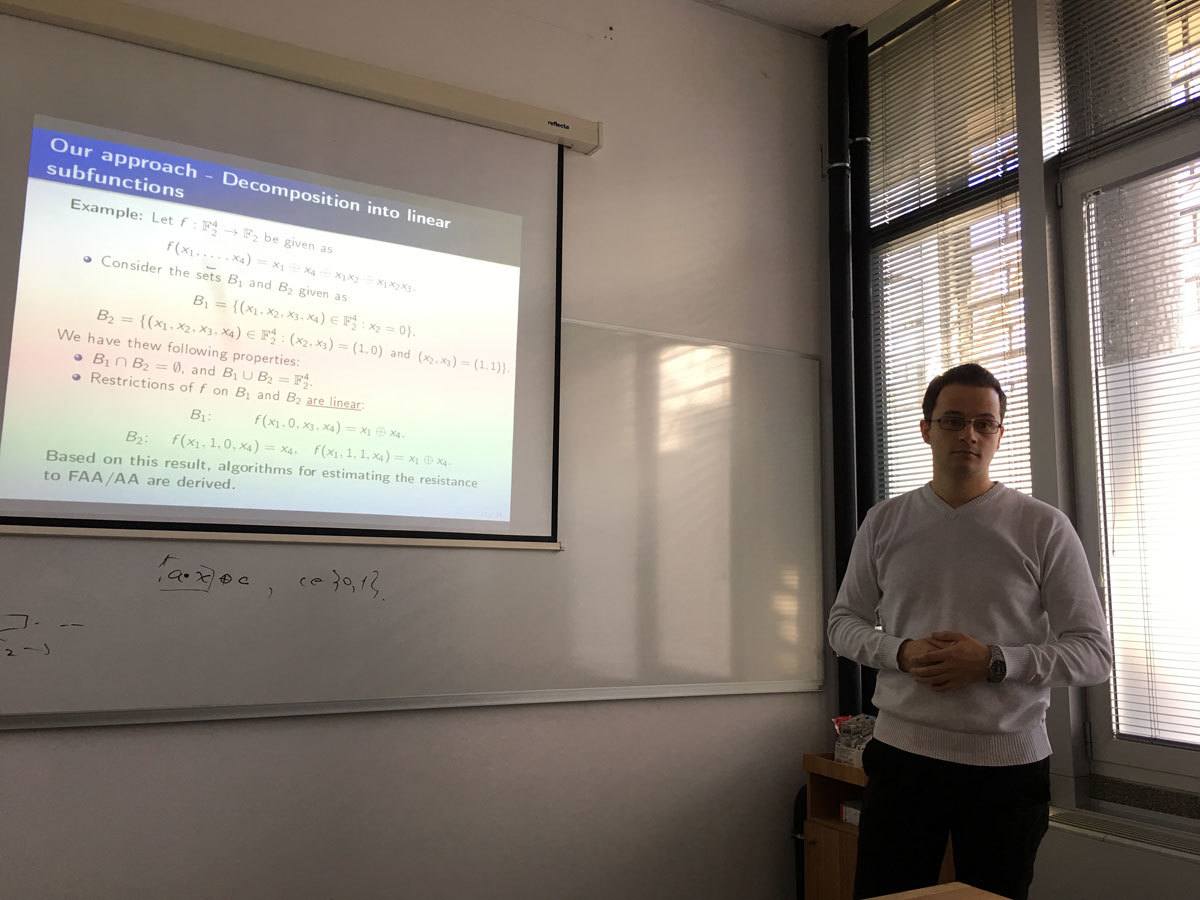Characterisation of Generalised Bent Functions and Some Other Topics Related to Cryptography
This is a presentation of the PhD thesis topic. The PhD thesis will consist of two parts: Generalized bent (gbent) functions (as a main part) and other topics related to cryptography.
Having the application in OFDM and MC-CDMA modulation techniques, which suffer from relatively high peak-to-mean envelope power ratio (PMEPR), in 2007 K. U. Schmidt proved that PMEPR is minimized if and only if a gbent function is used in OFDM/MC-CDMA systems. In the PhD thesis we will provide a full characterization of gbent functions (mappings from F^n_2–> Z_q), where we show that in algebraic sense they correspond to affine spaces of bent or semi-bent Boolean functions which satisfy certain properties related to Sylvester-Hadamard matrices. Moreover, we introduce the notion of Z_q-bent functins (as a subclass of gbent functions) which correspond to relative difference sets/ vectorial bent functions. For even number of input variables n, we determine the dual function of a gbent function, and depending on the parity of n we will prove that Gray maps of gbent functions are plateaued Boolean functions.
Apart from related topics, we consider three problems. First, we consider the problem of optimizing the placement of tap positions in LFSR-based stream ciphers. Analyzing the GFSGA attack we provide two algorithms for taps selection. We show that our algorithms may provide a significant improvement of resistance of the LFSR-cipher (which employs a filtering function) to GFSGA-like attacks comparing to relative difference sets. In addition, two new modes of the GFSGA attack are developed.
Then, we provide an algorithm for estimating the resistance of a random Boolean function to (Fast) Algebraic attacks (for relatively large number of input variables, say n>30 — which appears to be a hard problem). The complexity of our algorithms is estimated as O(n^2 2^n), which is much less then previous known algorithms.
At the end, we consider the problem of finding polynomials over finite fields which cannot possess linear structures. Such polynomials provide an optimal resistance to differential cryptanalysis. We identify several infinite classes of such polynomials, and we derive the upper bound on the degree of so-called planar mappings.




